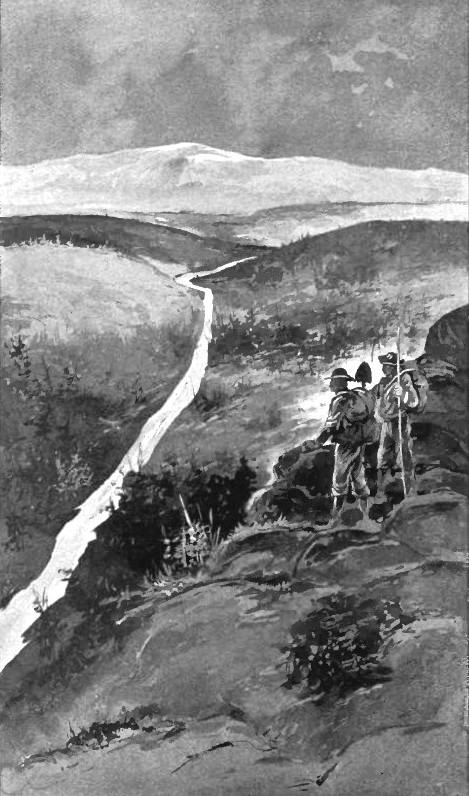The tin-bearing veins occupy a most important position as connecting links between the deposits of igneous and aqueous origin. The occurrence of cassiterite as a primary constituent of granite is recalled, as well as its occasional appearance in the pegmatitic druses of granite for instance, those in Elba described by G. vom Rath. We may further recall the appearance of cassiterite in economic quantities in pegmatite dikes and its occasional occurrence in base-metal veins for instance, in those of Freiberg and in the lower levels of the Przibram veins. The occurrence of tourmaline in cassiterite veins is also important in view of the transitions to the chalcopyrite tourmaline type.
From the close association of cassiterite veins and acidic granites it is argued that there must be some genetic connection between them and concluded that the veins were deposited by emanations from these magmas. This conclusion has been adopted and confirmed by almost all geologists who have studied these deposits. The general occurrence of cassiterite in well-defined veins shows clearly that the granite was consolidated when these fissures were broken, even if it is probable that the whole granitic intrusion had not congealed and that liquid magma still existed below the vein. The veins occur usually either in the center or along the contacts of the granitic masses, but some of them extend into the adjoining sedimentary rocks. Finally, it is clear that the development of these veins cannot be identified with the contact metamorphism, for they are distinctly later and their metasomatic effects are superimposed upon the products of contact metamorphism. Granitic magmas apparently do not easily part with their volatile constituents, which are mainly expelled during its final consolidation. The constant presence of boron and fluorine compounds, as well as those of phosphorus, in the tin veins is, of course, of the highest importance.
BOLIVIA. The Bolivian tin-ore deposits are confined to the Eastern Cordillera of the Andes, with the chief mining centers at Potosi, Oruro, Quimza Cruz, and La Paz. A peculiar feature of the Bolivian ores is their association with silver ores, and the occurrence of much pyrite as for example, at Potosi and Oruro. It used to be thought that the Bolivian ores had a mode of origin different from that of ores elsewhere, but it is now known that they are impregnation deposits of the usual type, and that the tin ore has been introduced by a granitic magma which has invaded, metamorphosed, and mineralized the surrounding rocks. In the Quimza Gruz tin-field, the prevailing rocks are Devonian quartzite and quartz-schist with intrusions of granite and quartz porphyry. The veins of tin ore occur in the quartzites and quartz schists, and the cassiterite is associated with quartz, tourmaline, sphalerite, pyrite, and siderite. In the Oruro district, andesitic volcanic rocks are abundant, in addition to the quartz -schists and quartz-porphyries; but here again the cassiterite occurs in the quartz-schists and appears to have no connection with the andesites. In this district, as at Potosi, the cassiterite is associated with bismuthinite, wolframite, and silver ores.
In some of the veins stannite (FeCu2SnS4) is present, as well as proustite, stephanite, tetrahedrite, sphalerite, arsenopyrite, bournonite, wolframite and siderite. Germanium minerals such as argyrodite (3Ag2S.- GeS2) was found at Potosi, and canfieldite, an argyrodite containing tin, at La Paz. The tin ores of Bolivia are in part of high grade and yield a production of great importance. Many of the Bolivian vein-deposits are very rich; they commonly carry an average of 20 per cent, or more of tin oxide, and some of the veins consist of almost solid cassiterite. These rich occurrences are, however, in Bolivia as elsewhere, apt to be in the nature of local patches or thin veins, and cannot as a rule be depended upon so much as the disseminated types of occurrence, which, though usually poor in value and yielding perhaps not more than one or two per cent, of cassiterite, are more persistent and constant in their yield.
AUSTRALIA. Australian tin-ores are mined chiefly in Tasmania, Queensland, and New South Wales, and to a smaller extent in Western Australia. In Tasmania, one of the most productive mines is that of Mt. Bischoff, where the rocks consist of slates and quartzites into which granite and quartz-porphyry are intrusiye. The cassiterite occurs both as veins in the slate and as impregnations in the quartz-porphyry. The associated minerals are quartz, topaz, tourmaline, fluorite, pyrite, arsenopyrite and wolframite. The ore is of low grade ; it contains on the average only about 1 percent, of cassiterite and is mined by open quarries. At the Anchor tin mines the ore is still poorer and consists of cassiterite disseminated in granite ; the ore at this mine does not contain on the average more than one per cent, of cassiterite. Near Middlesex, in Tasmania, cassiterite is associated with bismuthinite and wolframite in quartz-topaz veins that traverse a metamorphosed limestone; and these veins are being worked as a source of bismuth, tin, and tungsten. In some of the vein deposits of the Zeehan district both cassiterite and stannite occur, associated with numerous other minerals, including pyrite, chalcopyrite, galena, wolframite, bismuthinite, and tetrahedrite.
In Queensland, the chief tin-mining localities are those of Herberton and Stanthorpe. In the Herberton tin-field, granite and quartz porphyries occur intrusive in sedimentary rocks (slates, etc.). The cassiterite occurs in veins associated with wolframite, scheelite, bismuth, bismuthinite, antimonite, arsenopyrite, chalcopyrite, galena, . fluorite, topaz, tourmaline, and monazite. The veins in the Herberton district are fairly rich and carry on the average about 12 per cent, of tin. In the Stanthorpe district the mining is alluvial. In New South Wales, notable deposits of tin ore occur at Tingha and Emmaville in the New England district. Here, cassiterite occurs in numerous veins that traverse the granite, but it is the alluvial deposits derived from these that have been mined. A peculiar feature of the New South Wales alluvial deposits is that the gravels containing the cassiterite occur in the form of deep leads and are covered by flows of basalt. At Emmaville, alluvial deposits that were thought to have been exhausted are worked profitably by dredging. In Western Australia, tin ore is mined at Pilbara and Greenbushes. Cassiterite occurs in granite, pegmatite dykes, and surface weathering residues at these localities, but almost the whole of the tin ore so far obtained has been won from alluvial deposits. At Greenbushes the minerals associated with the cassiterite include tourmaline, topaz, tantalite, and gold ore.
AFRICA. There are notable deposits of tin ore in Nigeria, Transvaal, Swaziland, and South-West Africa. In the province of Bauchi, Northern Nigeria, tin ore is abundant, and has been derived by disintegration from the cassiterite-bearing pegmatites that traverse the underlying granite and metamorphic rocks. In the alluvium the cassiterite is associated with ilmenite, topaz, columbite, and monazite. Somewhat similar alluvial deposits, in which cassiterite is associated with ilmenite, columbite, and monazite, occur in the Oban Hills of Southern Nigeria, where, as usual, intrusive granites and quartz-porphyries occur.
In the Transvaal, tin ores are mined in the Waterberg, Rooiberg, and Potgietersrust districts. In the Waterberg and Rooiberg districts tin ore occurs in the red granite, and also in the Lower Waterberg shales, quartzites, and felsites, into which the granite is intrusive. The Transvaal deposits are remarkable for the abundance of primary pipe deposits in the granite; but stockworks, quartz veins, and disseminations are also represented. Among these Transvaal deposits the minerals associated with the cassiterite include quartz, tourmaline, fluorite, arsenopyrite, pyrite, chalcopyrite, sphalerite, galena, and molybdenite. In northern Swaziland, granites are intrusive in schists, and the schists are traversed by stanniferous pegmatites. In the alluvial deposits of the Mbabane and other rivers, which have been the chief source of the tin ore, the cassiterite is associated with corundum and monazite. Stanniferous pegmatites are found traversing schists in the Erongo mountain district of South-West Africa, and tin ore is obtained from the surface gravels of this district. Somewhat similar stanniferous pegmatites occur at Katanga in the Congo Territory.
Return
to Metal Ores Page:
Precious and Base Metal Ores


